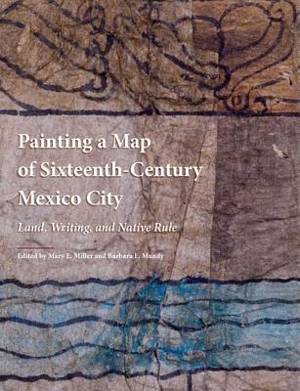
- Afhalen na 1 uur in een winkel met voorraad
- Gratis thuislevering in België
- Ruim aanbod met 7 miljoen producten
- Afhalen na 1 uur in een winkel met voorraad
- Gratis thuislevering in België
- Ruim aanbod met 7 miljoen producten
Painting a Map of Sixteenth-Century Mexico City
Land, Writing, and Native Rule
Omschrijving
In 1975, the Beinecke Rare Book and Manuscript Library of Yale University acquired an exceptional mid-16th-century map of Mexico City, which, until 1521, had been the capital of the Aztecs, the Nahua-speaking peoples who dominated the Valley of Mexico. This extraordinary six-by-three-foot document, showing landholdings and indigenous rulers, has yielded a wealth of information about the artistic, linguistic, and material culture of the Nahua after the Spanish invasion. This book marks the first publication of both the complete map and the multi-disciplinary research that it spurred.
A distinguished team of specialists in history, art history, linguistics, and conservation science has worked together for nearly a decade; the scientific analysis of the map's pigments and paper in 2007 marks the most thorough examination of a pictorial document from early colonial Mexico to date. The result of their work, the essays in Painting a Map of Sixteenth-Century Mexico, not only focuses on the map but also explores the situation of the indigenous people of Mexico City in the 16th century and their interactions with Europeans.
Distributed for the Beinecke Rare Book and Manuscript LibrarySpecificaties
Betrokkenen
- Uitgeverij:
Inhoud
- Aantal bladzijden:
- 232
- Taal:
- Engels
- Reeks:
Eigenschappen
- Productcode (EAN):
- 9780300180718
- Verschijningsdatum:
- 22/01/2013
- Uitvoering:
- Hardcover
- Formaat:
- Genaaid
- Afmetingen:
- 216 mm x 279 mm
- Gewicht:
- 1338 g

Alleen bij Standaard Boekhandel
Beoordelingen
We publiceren alleen reviews die voldoen aan de voorwaarden voor reviews. Bekijk onze voorwaarden voor reviews.











